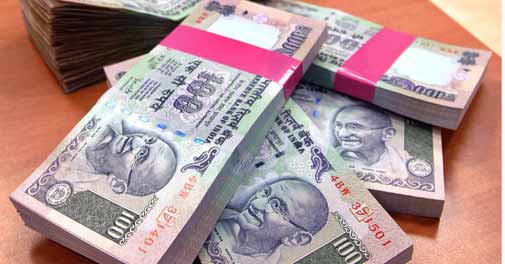
The Indian rupee has hit a new all-time record low against the US dollar, amid concerns the Federal Reserve will soon scale back its stimulus measures.
It dropped to 64.13 against the US dollar in early trade on Tuesday.
Foreign investors have been pulling money out of India, as the economy has slowed and the cost of borrowing in dollars has risen.
The Reserve Bank of India (RBI) is rumored to have intervened to stem the slide in the currency.
The Indian rupee has declined by nearly 16% against the US dollar since May and is Asia’s worst performing currency so far this year.
Its further decline on Tuesday was mirrored by falls in markets across other developing markets, particularly in Asia.
On Tuesday, Japan’s Nikkei 225 index fell by 2.6%, Hong Kong’s Hang Seng was down 2.2% and South Korea’s Kospi dropped by 1.6%.
The Indonesian stock market fell 4.9% on Tuesday, pushing it into a formal bear market – meaning it has fallen by more than 20% since its last peak.
Minutes from the Federal Reserve’s latest meeting are due to be published on Wednesday, and may set out more details about the rollback of its “quantitative easing” stimulus programme.

The Fed is expected to start slowing the rate of its purchases of government debts with newly-created money from next month.
Another source of concern in India is the country’s widening current account deficit.
The current account deficit is a broader measure than the trade deficit, and includes cross-border income flows on investments.
As well as weakening the currency, the deficit can also act as a drain on the central bank’s foreign currency reserves, and suggests that the Indian economy as a whole needs to borrow more money from abroad.
Meanwhile, the Indian government has been attempting to stem the tide of investor money leaving the country by imposing capital controls.
The combination of all these factors has sparked comparisons to the financial crisis that India faced in 1991. In July that year, the rupee eventually fell by more than 32% against the US dollar after foreign exchange reserves were depleted.
On that occasion, the country had to be rescued by the International Monetary Fund (IMF).
“Weakness concentrated in the Brazilian real and Indian rupee makes sense, as these are current account deficit economies with limited ability to defend their currencies,” said Bank of Singapore’s chief economist Richard Jerram.
“India is in worse shape than Brazil, with few viable policy responses.
“Capital controls in India are not likely to have much impact and there is the risk that a [credit] ratings agency downgrade leads to further currency weakness.”
Over the weekend, Indian PM Manmohan Singh tried to calm fears that India was facing another currency crisis.
Manmohan Singh said that back in 1991, the country only had enough foreign currency reserves to cover the country’s borrowing needs for 15 days, while currently it has reserves equivalent to six to seven months.
“So there is no comparison. And no question of going back to [the] 1991 crisis,” Manmohan Singh told the Press Trust of India.
International investors have withdrawn $11.58 billion in shares and debt from India’s markets since the beginning of June, according to official data.
India, which is Asia’s third-largest economy, grew at an annual rate of 5% in the 2012-13 financial year, the slowest pace in 10 years.
[youtube TOl-WsjQ3ZU]